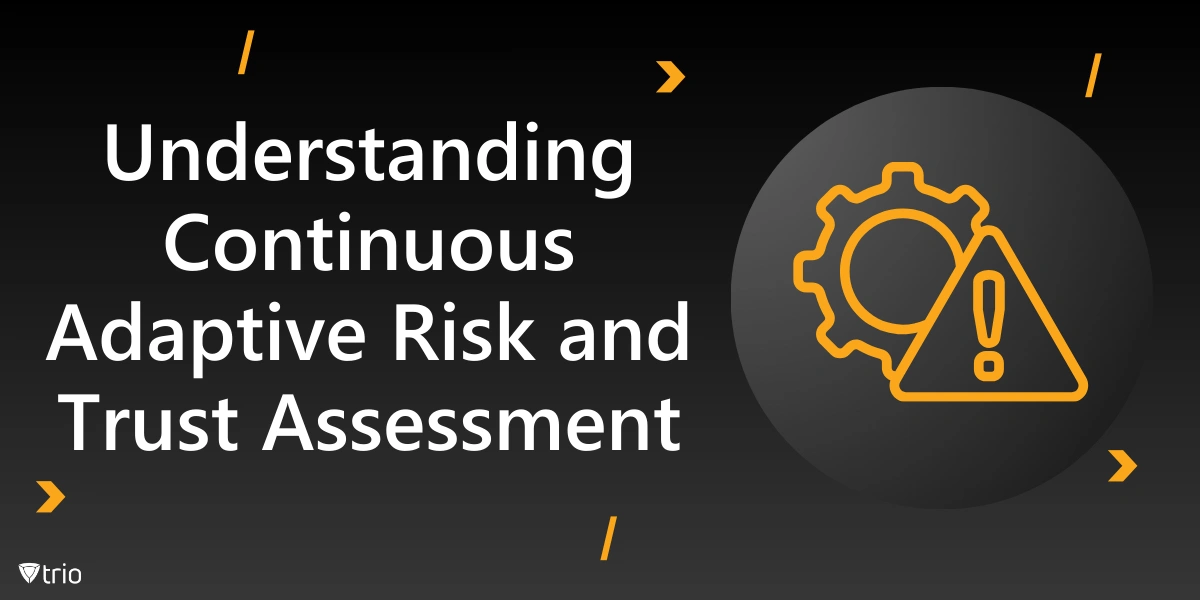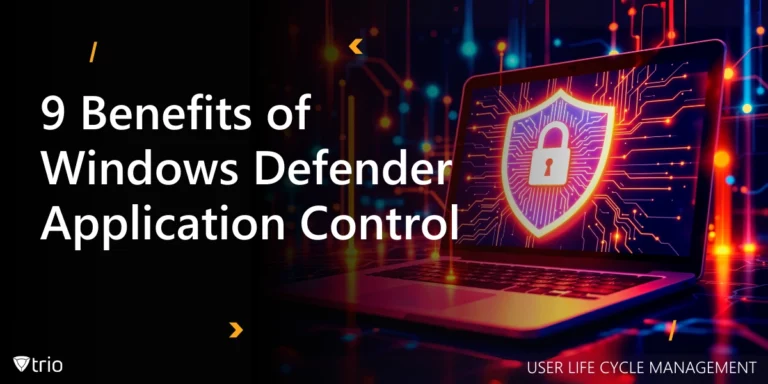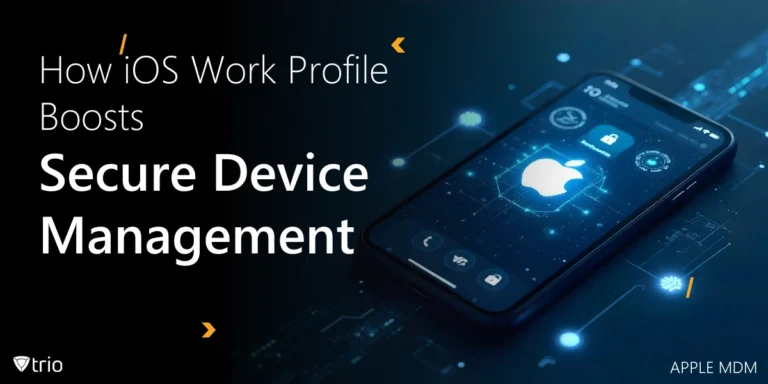Cybersecurity is evolving, and organizations require adaptive, intelligent systems to combat modern threats. Continuous Adaptive Risk and Trust Assessment (CARTA) is a dynamic cybersecurity framework introduced by Gartner to address today’s risks. Unlike traditional “trust but verify” models, CARTA constantly evaluates risks and trust levels in real time, empowering organizations to make informed security decisions. This blog explores the principles of CARTA, its benefits, real-world applications, and how it revolutionizes enterprise security strategies.
What Is Continuous Adaptive Risk and Trust Assessment?
We can define Continuous Adaptive Risk and Trust Assessment through its principles and components. The Continuous Adaptive Risk and Trust Assessment (CARTA) framework is a strategic approach developed by Gartner to enable real-time, adaptive decision-making in IT environments. It focuses on continuously assessing risk and trust levels to secure systems, data, and users effectively.
Key Principles of CARTA:
- Continuous Evaluation: Constantly monitor and evaluate users, devices, and systems for threats and vulnerabilities. Decisions are based on real-time data rather than static policies.
- Adaptive Trust Levels: Trust is not binary (trusted/untrusted). Instead, proper trust assessment dynamically adjusts based on ongoing behavior, context, and risk signals.
- Risk-Based Decisions: Actions like granting access, enforcing policies, or blocking activities are determined by real-time risk assessments.
- Integration Across Layers: CARTA applies across all layers—endpoint, network, application, and user behavior—for a holistic defense.
- Automated Responses: Automation allows immediate responses to anomalies, minimizing the window for potential damage.
Components of CARTA:
- Identity and Access Management (IAM): Adapts access permissions based on changing trust and user behavior.
- Behavior Analytics: Uses machine learning to detect anomalous activities that signal potential threats.
- Zero Trust Principles: Enforces strict access controls where trust is earned continually.
- Threat Intelligence: Incorporates real-time threat data to improve the accuracy of risk assessments.
- Feedback Loops: Collects insights from past decisions and attacks to refine future risk evaluations.
Benefits of Continuous Adaptive Risk and Trust Assessment
CARTA offers several significant advantages:
- Proactive Threat Detection
CARTA enables continuous monitoring of systems, allowing organizations to detect suspicious activity before it escalates into breaches. - Improved User Experience
Instead of rigid policies, CARTA provides flexible security measures, ensuring smooth access for legitimate users while blocking malicious actors. - Real-Time Decision Making
Organizations can make dynamic security adjustments based on the latest threat intelligence and contextual factors. - Scalable Security
CARTA adapts to growing infrastructures, making it an excellent choice for enterprises embracing cloud technologies or IoT. - Enhanced Regulatory Compliance
By automating risk assessments, CARTA helps organizations meet compliance requirements like GDPR, PCI DSS, and HIPAA.
Real-World Applications of CARTA
Organizations across industries are implementing CARTA to strengthen their cybersecurity strategies.
- Finance: Banks use CARTA to monitor transaction patterns and prevent fraud in real-time.
- Healthcare: Hospitals implement CARTA to secure patient data while maintaining accessibility for medical staff.
- E-Commerce: Online retailers utilize CARTA to protect customer accounts and payment systems from breaches.
CARTA vs. Traditional Security Models
Here’s a comparison between CARTA and traditional security models:
1. Trust Approach
- CARTA: Trust is dynamic and adaptive, continuously evaluated based on real-time behavior and context.
- Traditional Models: Trust is static and binary (trusted/untrusted), based on fixed rules or roles.
2. Risk Assessment
- CARTA: Ongoing, continuous risk assessments using real-time data.
- Traditional Models: Periodic risk assessments, often based on pre-defined thresholds.
3. Response Mechanism
- CARTA: Automated, real-time responses to changing risks or anomalies.
- Traditional Models: Reactive, manual responses, often delayed by analysis and decision-making.
4. Threat Handling
- CARTA: Focuses on detecting and responding to unknown and evolving threats using AI/ML.
- Traditional Models: Primarily protects against known threats using static rules and signatures.
5. Access Control
- CARTA: Implements Zero Trust, continuously validating user and device behaviors.
- Traditional Models: Relies on perimeter-based security (e.g., firewalls) with implicit trust for internal systems.
6. Adaptability
- CARTA: Adapts policies dynamically based on changing conditions.
- Traditional Models: Static policies that require manual updates to accommodate changes.
7. User Experience
- CARTA: Minimizes friction for legitimate users by dynamically adjusting security measures.
- Traditional Models: Often imposes rigid security controls, regardless of risk level.
8. Integration
- CARTA: Works across multiple layers (endpoint, network, application) with feedback loops.
- Traditional Models: Operates in isolated silos, with limited cross-layer visibility.
CARTA and Emerging Technologies
CARTA integrates seamlessly with modern technologies to deliver enhanced security.
- Artificial Intelligence (AI): Machine learning algorithms refine CARTA’s risk models, enabling it to identify anomalies faster.
- Zero Trust Architectures: CARTA complements zero-trust frameworks by validating every access request dynamically.
- Cloud Security: CARTA adapts to the complexities of cloud environments, ensuring robust protection across hybrid infrastructures.

Implementing CARTA in Your Organization
To effectively adopt CARTA, organizations must transform their traditional security models into dynamic, adaptive frameworks. Here’s how:
Step 1: Embrace Zero Trust
- Abandon the idea of implicit trust based on location (e.g., internal network).
- Implement Zero Trust principles, where every user, device, and application is authenticated and authorized continuously, regardless of their location.
- Use tools like adaptive multi-factor authentication (MFA) and least privilege access.
Step 2: Integrate Behavior Analytics
- Deploy advanced AI/ML tools to analyze user and device behaviors in real time.
- Identify anomalous patterns (e.g., unusual login times or access requests) to proactively detect potential threats.
- Incorporate User and Entity Behavior Analytics (UEBA) solutions for greater precision.
Step 3: Automate Responses
- Use Security Orchestration, Automation, and Response (SOAR) tools to respond instantly to threats.
- Automate tasks like quarantining suspicious devices or revoking risky user access.
- This minimizes manual intervention and reduces the response time.
Step 4: Establish Feedback Loops
- Create mechanisms to gather insights from incidents and continuously update security policies.
- Leverage post-incident reviews to fine-tune CARTA processes, improving accuracy and agility.
Step 5: Collaborate Across Teams
- Security cannot operate in isolation. Ensure collaboration between IT, cybersecurity, and business teams.
- Align CARTA goals with business objectives to maintain a balance between security and productivity.
Challenges in CARTA Adoption
While CARTA offers significant benefits, transitioning to this framework poses several challenges:
Cultural Resistance
- Many organizations are accustomed to static, perimeter-based security models.
- Convincing stakeholders to adopt a continuous, adaptive approach may require significant effort.
Cost and Complexity
- CARTA demands investment in advanced technologies, including AI/ML, automation tools, and analytics platforms.
- Implementing and maintaining these systems can strain budgets and resources.
Data Overload
- Continuous monitoring generates vast amounts of data, which can overwhelm existing analysis capabilities.
- Organizations must have tools and teams in place to process and interpret this data effectively.
Skill Gaps
- CARTA requires expertise in adaptive security, behavior analytics, and automation, which many teams may lack.
- Closing the skill gap involves upskilling staff or hiring specialists, both of which take time and resources.
Integration Hurdles
- Many organizations rely on legacy systems that are incompatible with CARTA’s real-time, dynamic nature.
- Ensuring seamless integration while avoiding operational disruptions can be challenging.
CARTA and the Future of Cybersecurity
Here is how CARTA can affect the future of cybersecurity:
Dynamic Threat Defense
- CARTA shifts from static to dynamic security, constantly adapting to evolving threats.
- This ensures systems remain resilient against sophisticated and unknown attacks.
AI and Automation Integration
- CARTA will leverage AI-driven insights to predict risks and automate responses.
- Future advancements in AI will make threat detection faster and more precise, reducing false positives.
User-Centric Security
- CARTA’s adaptive trust reduces unnecessary security friction for legitimate users.
- It offers a tailored experience, improving productivity while maintaining strong security measures.
Widespread Adoption
- With the rise of cloud environments, hybrid workplaces, and IoT, traditional security models are becoming obsolete.
- CARTA is poised to become the industry standard, especially for enterprises managing diverse IT ecosystems.
Proactive Risk Management
- CARTA’s emphasis on continuous risk assessment allows organizations to predict and prevent attacks before they occur.
- This proactive approach will redefine cybersecurity, focusing on minimizing potential threats rather than responding after breaches happen.
By addressing these challenges and leveraging CARTA’s principles, organizations can future-proof their security strategies and keep pace with the rapidly evolving threat landscape.
How Mobile Device Management (MDM) Solutions Can Help with CARTA
Mobile Device Management (MDM) solutions play a pivotal role in enabling Continuous Adaptive Risk and Trust Assessment (CARTA) and vulnerability management in general by providing comprehensive device monitoring, management, and mobile security. Here’s how:
- Continuous Monitoring: MDM solutions track device health, user activities, and compliance status in real time. This aligns perfectly with CARTA’s requirement for constant risk evaluation.
- Context-Aware Risk Assessment: MDM tools collect contextual data like location, network connections, and app usage to help evaluate risks dynamically, adjusting trust levels accordingly.
- Adaptive Security Policies: MDM platforms enable the enforcement of dynamic security rules, such as requiring multi-factor authentication (MFA) for high-risk activities or revoking access for compromised devices.
- Integration with Zero Trust: MDM integrates with zero-trust architectures to grant the least-privilege access based on CARTA’s real-time trust decisions.
- Threat Response Automation: If a device exhibits suspicious behavior, MDM solutions can automatically isolate it or restrict access to sensitive data, reinforcing CARTA’s adaptive response principle.
By leveraging MDM solutions, organizations can seamlessly implement CARTA, enhancing their ability to secure mobile endpoints and protect sensitive data against evolving threats.
See Trio in Action: Get Your Free Trial Now!
Conclusion
Continuous Adaptive Risk and Trust Assessment is a game-changer in the cybersecurity landscape. By prioritizing real-time risk evaluations and adaptive trust mechanisms, CARTA provides organizations with a proactive approach to defending against modern threats. Whether you’re securing a cloud infrastructure or protecting sensitive data, CARTA is a must-have framework for achieving robust cybersecurity. Explore how Trio’s cutting-edge solutions can help your organization implement adaptive security frameworks like CARTA for better cloud security posture management. Start your free trial today!




